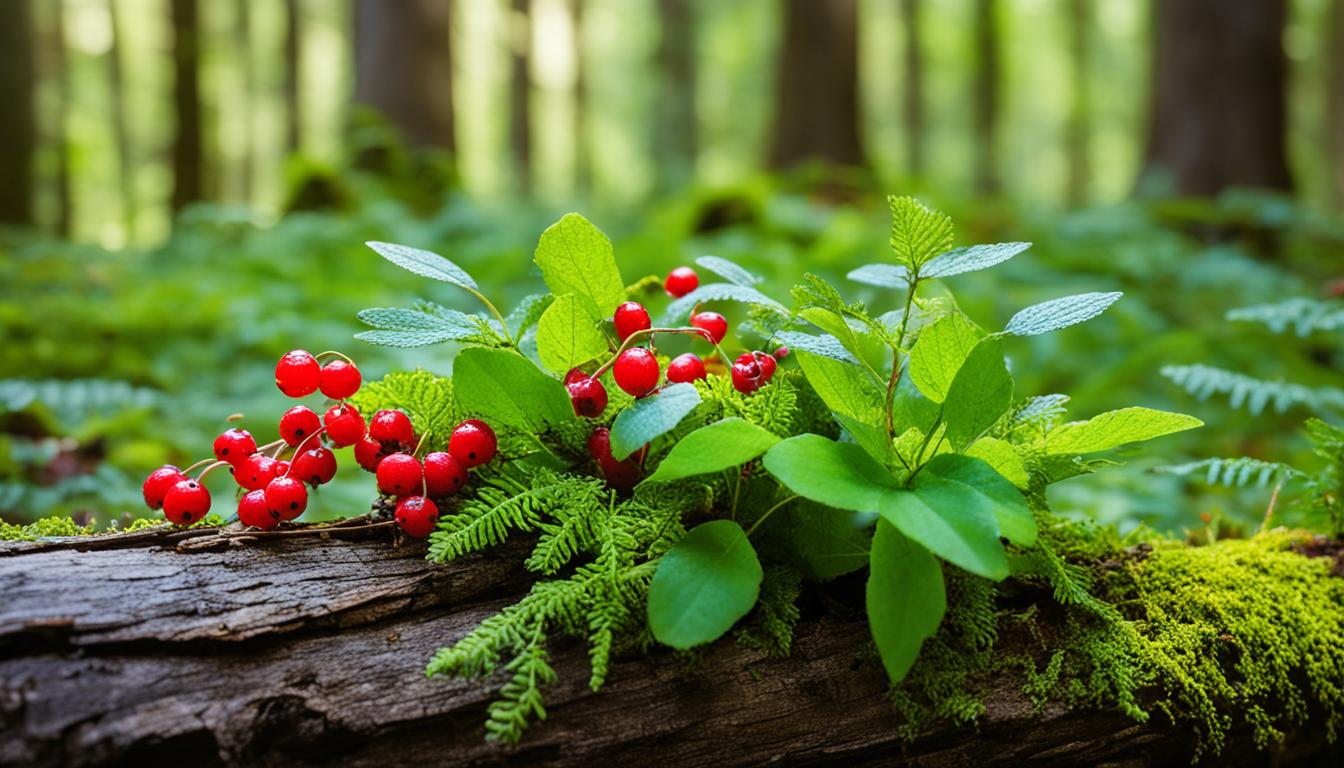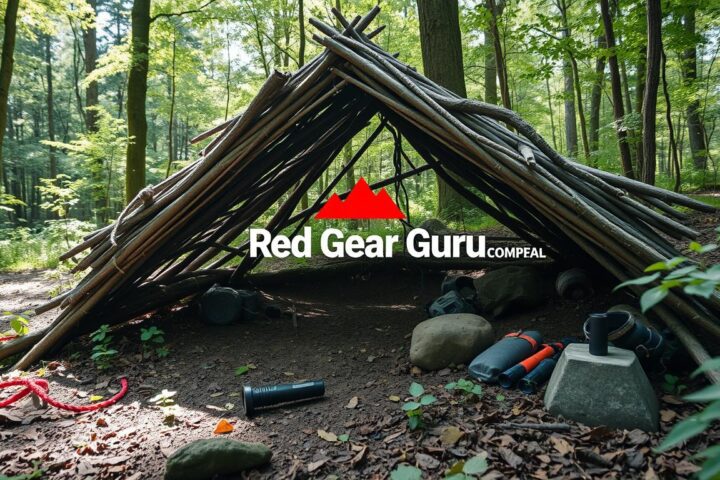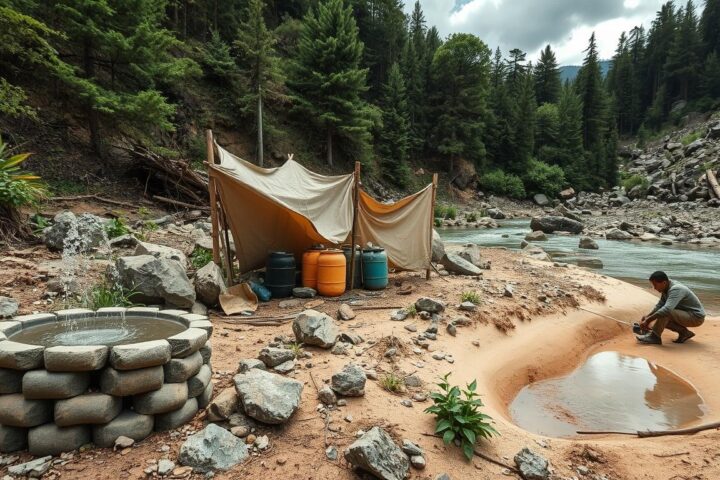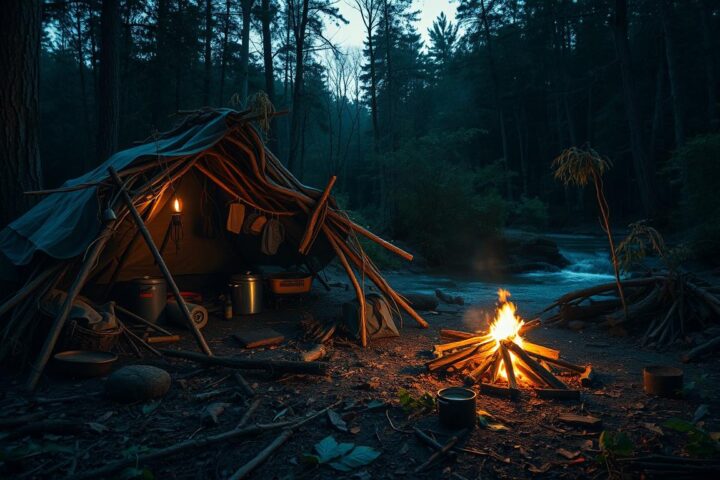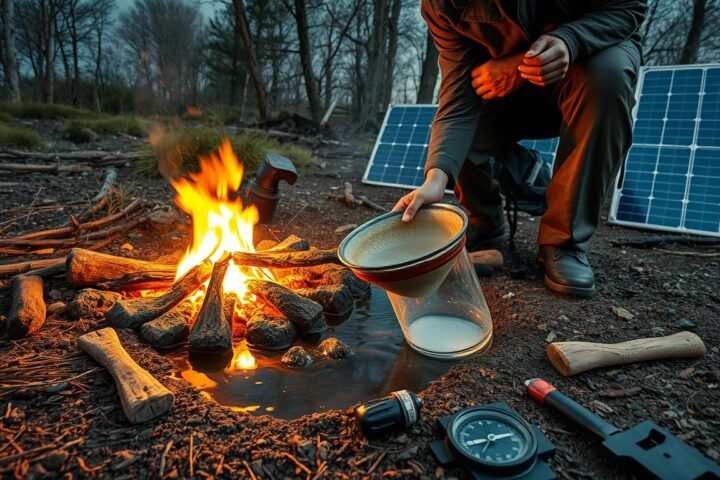Ever thought about the tasty treats hiding just outside your door? As a nature lover, I’m excited to show you the world of wild plants that are edible. Let’s explore the Mid-Atlantic region together, where over 70 wild plants are waiting to be found.
Imagine using the leaves of dandelions and the tangy wood sorrel in your cooking. These wild plants are full of nutrients and flavor. They can turn into delicious dishes that feed your body and connect you with nature. Start your journey to explore nature’s pantry and discover new flavors.
But what makes these wild plants special, and how can you use them safely? This guide will show you the benefits, how to forage, and tasty recipes. It will change how you see the wild plants around you.
The Bountiful World of Wild Edibles
The Mid-Atlantic region is full of edible wild plants. Each one has its own special flavors, textures, and nutrients. From forests and meadows to riverbanks and wetlands, these plants have fed people for centuries. They offer a way to live sustainably, healthily, and deeply connected to nature. By adding edible wild plants to our diets, we can enjoy nature’s grocery store.
Lee Allen Peterson is an expert on foraging and wild edibles. He has traveled across North America to learn about these plants. His guide, “A Field Guide to Edible Wild Plants,” teaches us about their nutrition and medicine.
In Peterson’s guide, you’ll find plants like the dandelion, milkweed, chicory, cattail, sheep sorrel, wild garlic, and violet flowers. These plants are not only familiar but also offer many uses in cooking and health. They show us the beauty of the plants around us.
Foraging for wild plants adds flavor and connection to our diets. It teaches us to respect and understand nature. By learning to identify and harvest these plants, we can explore a world of diversity. We can enjoy the wild edibles that our region offers.
Key Benefits of Foraging for Edible Wild Plants
Foraging for wild plants is more than just a way to eat. It’s a chance to get essential vitamins, minerals, and antioxidants. These plants help your body and mind, and connect you with nature.
Wild foods are packed with nutrients, often more than store-bought ones. They have vitamins, minerals, and phytochemicals that boost your health.
- Wild foods are richer in vitamins, minerals, and antioxidants compared to domesticated plants.
- Foraging promotes sustainable living by reducing your ecological footprint and supporting the health of ecosystems.
- Gathering wild edibles can save you money on groceries, as these plants are freely available in nature.
Foraging is good for your mind and heart too. It connects you with nature and helps you feel fulfilled. It can lower stress, boost your immune system, and make you feel better overall.
Choosing to forage for wild plants is smart for your health and the planet. It helps reduce our need for industrial farming and protects nature. So, start exploring the wild and discover what nature has to offer.
A Beginner’s Guide to Wild Edible Plants
Start a fascinating journey of finding nature’s hidden foods with this guide to wild edible plants. It’s perfect for outdoor lovers or those curious about adding wild foods to their diet. Learning to identify plants and harvest them safely is key to a healthy and sustainable life.
Explore the world of wild edibles, full of nutritious and tasty plants. This guide will teach you to tell edible from poisonous plants. This way, you can enjoy nature’s gifts safely.
- Master Plant Identification: Get to know the unique looks of common wild edible plants in your area. This is the first step to safe foraging.
- Understand Foraging Safety: Learn important rules for wild adventures, like the universal edibility test and how to spot dangers.
- Practice Responsible Harvesting: Discover how to forage without harming plants or the environment. This makes you a true guardian of nature.
- Explore Nutritional Benefits: See how wild edibles are packed with vitamins, minerals, and antioxidants, often more than store-bought foods.
- Discover Delicious Recipes: Turn your wild finds into tasty dishes that highlight nature’s unique flavors and textures.
This guide gives you all you need to forage safely and sustainably. It’s packed with plant details, harvesting advice, and safety tips. Start this exciting journey and discover the wild’s hidden gems.
Remember, foraging responsibly is both rewarding and vital for our ecosystems. Join the movement towards sustainable living and protect the land.
Delicious Wild Edibles of the Mid-Atlantic Region
Start a culinary journey through the green landscapes of the Mid-Atlantic. Here, you’ll find many edible wild plants. From the green forests to the flowing riverbanks, this area is full of tasty species. Each one has its own special flavor and way to be used in cooking.
Ramps, the wild leeks, grow in the forests and are loved for their strong smell and many uses. Morels, hard to find but much wanted, come out in early spring. They taste earthy. Dandelions, seen as weeds, are actually full of nutrients. Their leaves and flowers add a nice bitterness to salads and sautés.
Blackberries grow in meadows and thickets, offering a sweet taste. You can make jams, pies, and drinks with them. They’re a favorite in the region’s cooking.
The guide helps you forage safely and responsibly. It gives you plant profiles, tips for identifying them, and how to pick them. Enjoy the wild edibles in your meals and help the local ecosystems.
If you’re new to foraging or have been doing it for years, the Mid-Atlantic has many edible wild plants to discover. Start this culinary adventure and learn about nature’s hidden foods.
Edible Wild Plants: Nature’s Hidden Treasures
Discover the amazing world of edible wild plants, full of nutrition right before our eyes. These plants have fed humans for thousands of years. They offer a healthy and sustainable choice over processed foods. Learn how to find and use these plants to deepen your connection with nature and live more eco-friendly.
Our guidebook covers over 100 wild plant species in Oregon. It’s packed with detailed descriptions and clear photos, listed alphabetically for easy use. This guide spans 92 pages, making it essential for anyone into foraging, wild edibles, and natural foods.
Boost your survival skills by learning to identify plants. Enjoy a refreshing peppermint tea or a tea made from dandelion roots. Wild edible plants offer a fun and healthy way to connect with nature.
Get expert advice from foraging pro Pat Armstrong. He teaches plant identification and how to harvest over 70 plants. His classes, from Tasting the Trees to Feasting on Flowers, will show you nature’s bounty. You’ll learn valuable survival skills too.
Explore the world of edible wild plants for a sustainable lifestyle. Dive into nature’s treasures and change how you see the land, one tasty find at a time.
Transform Your Wild Finds into Mouthwatering Dishes
Unleash your culinary creativity and turn your wild-foraged finds into a variety of tasty dishes. From savory stews and hearty salads to refreshing drinks and decadent desserts, the options are endless. Use the flavors of nature to make your meals special. Discover wild edibles recipes that show off each plant’s unique taste and versatility in the kitchen.
The book “Forager’s Guide to Wild Foods” has detailed plant descriptions with high-quality photos. It helps you identify wild edibles. It also tells you where and how each plant grows, making foraging easier. Plus, it gives recipes to make your wild finds into tasty dishes.
It also shares tips on preserving wild edibles so you can enjoy them all year. You’ll learn about the health benefits of wild plants. This helps you make better food choices. The book also talks about the medicinal uses of some wild plants, showing their traditional roles in healing.
If you’re an experienced forager or just starting, the “Forager’s Guide to Wild Foods” will inspire you. It encourages you to explore nature’s bounty and try new wild edibles recipes. Start a delicious journey of discovery and turn your wild finds into dishes that celebrate the Mid-Atlantic region’s flavors.
The Nutritional Powerhouses of Wild Edibles
Wild plants are full of vitamins, minerals, and antioxidants. They are great for your health and the planet. Adding them to your meals can boost your immune system and help with digestion. It also makes your lifestyle more sustainable.
Wild dandelion greens are packed with vitamins A, C, and K, plus calcium and iron. Wild blackberries and raspberries are full of antioxidants that fight off harmful free radicals. Stinging nettle is also rich in vitamins and minerals, making it a great addition to your diet.
Foraging for these plants is good for your health and the environment. It cuts down on the need for commercial food production and transport. Eating wild edibles supports your local ecosystem and helps the planet.
If you’re into fitness or health, wild edibles are a great choice. They offer a lot of protein and antioxidants. From wild greens to berries and mushrooms, there’s a lot to try. Embrace the nutritional value of wild edibles, health benefits of foraging, and the fun of wild plants as superfoods. They can make you healthier and help you live better.
Foraging for Mental and Physical Well-being
Foraging for edible wild plants in nature offers more than just food. It connects you deeply with the outdoors and boosts your mental and physical health. It’s a way to feel more mindful and refreshed. By exploring the Mid-Atlantic’s green spaces, you can enjoy the calming effects of foraging as a type of nature-based therapy.
Studies show that foraging can greatly improve your mental health. Being in nature and finding wild plants can ease depression, anxiety, and stress. It makes you focus on the present, leaving daily worries behind. This focus brings peace, clear thinking, and better overall well-being.
Foraging also benefits your body. Wild plants are often as nutritious as, or even more nutritious than, what you find in stores. They’re full of vitamins, minerals, and antioxidants. Adding these nature-based foods to your meals can make you healthier, strengthen your immune system, and support your physical health benefits.
Why not start a foraging journey? Discover the mental health benefits of foraging and the physical health benefits of wild edibles. Let nature’s healing power transform your life, feeding both your body and mind.
Responsible Harvesting and Conservation
When we go foraging, we must focus on sustainable practices. This helps keep wild plant populations healthy for the future. By harvesting ethically, we protect nature’s food for others to enjoy too.
It’s important to think about how our actions affect the environment. Wild plants can take in pollutants from the soil. So, we should pick where we forage carefully and know it’s safe. Also, we should only take what we’re allowed to, in places where it’s okay to do so.
- Start with a single, easily identifiable plant when beginning to eat wild foods.
- Use field guides and foraging books to accurately identify plants and avoid any potentially harmful species.
- Employ responsible harvesting techniques, such as using scissors to cut greens and plastic bags to separate dirty root vegetables.
Learning about where plants live and how they grow is key to sustainable foraging. We should manage our harvest to help plants grow back. It’s best to pick common, healthy plants found in open areas.
Learning from others is vital in becoming a responsible forager. Events like the Midwest Wild Harvest Festival are great for learning from experts. They help us build a community of ethical foragers.
By choosing sustainable foraging, we can enjoy nature’s gifts while keeping our ecosystems healthy. Let’s work together to keep the wild’s secrets safe for the future.
Engaging the Senses: A Multisensory Foraging Experience
Take your foraging to the next level by using all your senses. Notice the bright colors and shapes of wild plants. Smell the fragrant scents in the air. Feel the different textures of leaves and stems. Listen to the forest sounds. Taste the unique flavors of the plants you find.
This way, you’ll connect more deeply with nature. You’ll appreciate the food that grows around you. And you’ll enjoy living in harmony with nature.
At Pearl Morissette, Deirdre Fraser makes the garden and kitchen a sensory delight. Guests see beautiful flowers and taste unique fruits and berries. Deirdre’s foraging skills and focus on sensory awareness make dining there an unforgettable experience.
Foraging is becoming popular again as people seek to reconnect with nature. It lets us eat wild foods and also nourishes our minds and spirits. By learning to find and use these plants, we go on a journey that brings us closer to nature.
